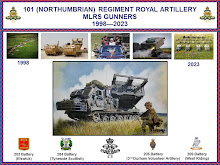The Messines Ridge runs North South from Hill 60 to south of Messines. It had been in German hands since 1914 and it’s capture was essential to the forthcoming offensive that would launch the Third Battle of Ypres.
The planning for the capture of the ridge began in August 1915 when the Royal Engineers began tunnelling under the German defences with the intent of mines filled with tons of explosives.
 |
| Royal Engineer Tunnellers |
Over a period of two years 25 mines containing 500,000 kilograms of explosive would be dug under the Messines Ridge prior to the battle.
On the eve of the Battle of Messines, General Sir Charles Harrington, Chief of Staff Second Army, remarked to press reporters;
"Gentlemen, I don’t know whether we are going to make history tomorrow, but at any rate we shall change geography"
 |
| Messines Mine Explosions |
One of the largest mines was located at Spanbroekmolen. The 41,000 kgs of explosive at Spanbroekmolen left a crater 27 metres deep and a diameter of 76 metres which is now filled with water.
 |
| Messines Ridge Spanbroekmolen Crater |
 |
| Messines Ridge Spanbroekmolen Crater IJ |
The assault on the Messines Ridge would be conducted by the British Second Army, X Corps on the left, X Corps centre and II ANZAC Corps on the right.
The capture of the village of Messines would be conducted by the New Zealand Division.
 |
| Messines Ridge view towards New Zealand positions |
 |
| New Zealand Division attack on Messines |
The effect of the mine explosions coupled with the preliminary bombardment were devastating. Defences were destroyed or neutralised, many who survived were so traumatised they surrendered or ran away. The creeping barrage successfully supported the infantry assault and the German defences were breached, the Messines was captured and the New Zealanders consolidated their position.
 |
| Messines assault on Messines Ridge |
The New Zealanders' success was replicated along the Messines Ridge which now lay in British hands.
 |
| New Zealand Memorial Messines |












.JPG)



















